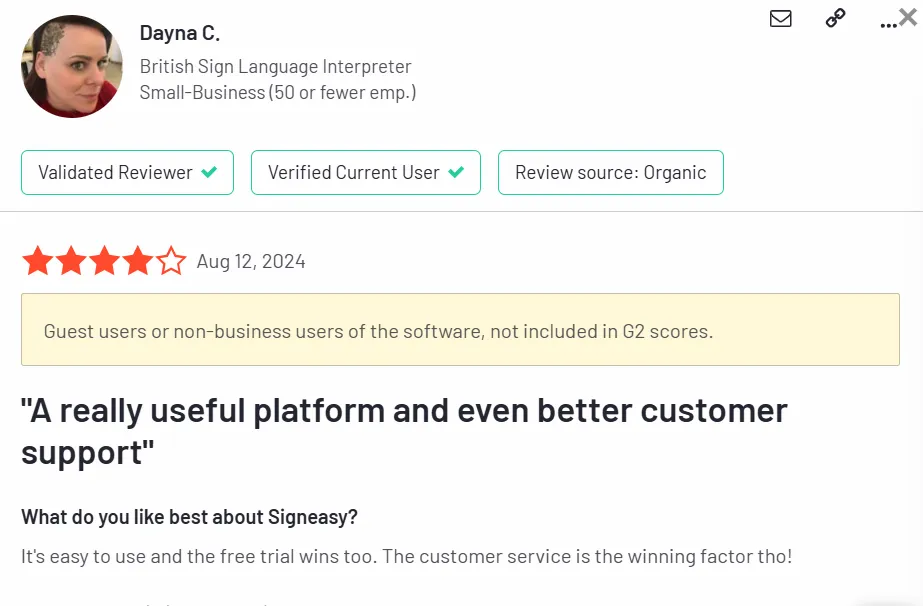If we are honest with ourselves, managing documents isn’t exactly the most exciting part of running a business. It is a routine task that requires more attention to detail than expertise. And businesses are starting to realize it.
Even industries that were once resistant to AI, for example legal, are now warming up to AI-powered document automation. An attorney discussed it in the Future of Professionals Report,
“The role of a good lawyer is as a ‘trusted advisor,’ not as a producer of documents… breadth of experience is where a lawyer’s true value lies and that will remain valuable.”
In other words, spending hours drafting documents is a waste of valuable time. That’s why even the most process-heavy industries are turning to document automation. After all, it frees up their teams to focus on higher-impact work.
So, how can you implement document automation in your business? Keep reading to learn
- What document automation is and it’s top use cases
- Top benefits of document automation
- How to choose document automation software
What is document automation and how does it work?
Document automation users technology (say software like Signeasy) to streamline routine tasks such as creating, approving, signing, and managing documents. It minimizes errors, improves efficiency, and reduces manual effort.
There are three common document automation types:
1. Templatization: Instead of drafting documents from scratch, businesses use standardized templates with placeholders for key details. Users simply input the necessary information, and the system generates a fully formatted document in seconds.
2. Workflow automation: Manual processes slow businesses down. Workflow automation eliminates bottlenecks by routing documents for approvals, notifying stakeholders, auto-storing files, and ensuring tasks move forward without endless follow-ups and back-and-forth emails.
3. eSignatures: Collecting signatures is one of the biggest bottlenecks in document processes. With eSignature automation, businesses can send signing requests via email, track progress, and set up automatic reminders. Implementing eSignatures is one of the best practices in contract management. This capability allows teams to sign documents online securely, eliminating delays caused by manual printing and scanning.
What are the benefits of document automation?
I am sure you are wondering why invest time in setting up document automation? Because the long-term gains far outweigh the effort. Below are the benefits of document automation for your business:
1. Speeds up document creation
Document automation software helps to create pre-built templates where users can just enter in a few details and get the document ready. It fastens the entire document creation process and improves the efficiency of teams. For instance, SC Home Buyers, a real estate company, used Signeasy to automate their paperwork and noticed documentation that would take 12-24 hours was done in 2-4 minutes.
Manually drafting documents is time-consuming and repetitive. One of the best benefits of document automation is that businesses can use pre-built templates where users simply enter key details, generating error-free documents in seconds.
For example, SC Home Buyers, a real estate company, automated their paperwork. What once took 12 to 24 hours was reduced to just 2 to 4 minutes.
2. Reduces manual errors
Manually creating documents leaves room for mistakes, such as missing key details, skipping approvals, or losing track of follow-ups. These errors don’t just slow things down; they can disrupt entire workflows.
SOHAR Port and Freezone, a transportation company, faced similar challenges. Mistakes in their manual documentation process often meant starting over from scratch, wasting valuable time and impacting operational efficiency. By switching to Signeasy, they benefited from document automation processes. They replaced slow, error-prone workflows with a streamlined, automated system, ensuring accuracy and faster processing.
3. Provides an integrated solution
Switching between multiple apps to manage documents slows teams down. A document automation system integrates seamlessly with cloud storage like Google Drive and OneDrive, CRM software, and even workspaces like Google Workspace and Microsoft 365 tools. It keeps everything connected.
For example, Moreland University streamlined its document workflows by integrating Signeasy’s eSign API directly into its Learning Management System (LMS). This allowed them to get their students to sign documents without ever leaving the platform improving user experience.
4. Boosts scalability
As businesses grow, so does the volume of paperwork. Manually handling approvals and document creation doesn’t scale. It slows teams down. Document automation automates the entire process, making it easy to manage large volumes effortlessly.
Mercure Hotel Group faced a similar challenge. With a rising influx of documents, many requiring five or more signers, their manual process became unsustainable. After adopting Signeasy, they scaled up to handling 10,000 documents per month, all while keeping workflows smooth and efficient.
5. Fastens internal approvals
Waiting for approvals can slow down entire workflows, especially in distributed teams. Document automation ensures documents reach the right stakeholders instantly, with automated reminders to fast-track approvals.
For example, Ruwacon’s finance department struggled with slow approval cycles, especially with stakeholders spread across the country. By centralizing documents and digitizing the process, what once took days now gets approved in minutes, keeping operations on track.
6. Improves customer experience
Requiring customers to visit in person or wait for physical signatures creates unnecessary friction. Document automation enables quick, hassle-free signing from anywhere, improving the overall experience.
Assante, a Canadian wealth management firm, faced this challenge with clients in different cities and schedules. By adopting a digital document workflow, they eliminated back-and-forth reminders and enabled customers to sign documents without a single follow-up email or call, making the process smooth for everyone.
7. Improves document organization
Tracking down documents shouldn’t feel like a scavenger hunt, yet 1 in 10 employees spend over four hours a week searching for files. Many don’t remember where documents are stored, struggle with access permissions, or even lose important files altogether.
Document automation solves this by centralizing storage, keeping everything in one place with easy search functionality. It also provides access control, ensuring only the right people can view or edit specific documents, reducing security risks and confusion.
8. Supports compliance
Meeting compliance standards is non-negotiable, but managing regulatory paperwork manually increases the risk of errors. Leading document automation platforms ensure compliance with data privacy, encryption, and electronic signature laws, so your documents remain legally valid and secure.
Compliance also varies by industry. In transportation, for example, companies must maintain detailed shipment records with driver signatures. Halvor Lines, a trucking company, struggled to collect signatures from drivers constantly on the road. By switching to Signeasy, they enabled mobile signing, ensuring documents were completed on time and reducing compliance audit risks.
9. Creates a consistent brand experience
Every customer interaction is a chance to reinforce your brand. Including your documents. Document automation lets you apply custom branding across all document workflows, from offer letters to agreements.
For example, OnBlick, an HR tech company, automated its hiring workflows using Signeasy while adding custom branding to all communication emails. Now, every offer letter and reminder email carries their company logo, creating a trustworthy and consistent brand experience.
How different departments benefit from document automatio
Document automation isn’t just about saving time—it transforms workflows across departments by eliminating repetitive tasks, reducing errors, and keeping processes moving smoothly. Here’s how different teams can benefit:
1. HR: Offer letters and employment agreements
HR teams handle endless paperwork for every new hire, but the core terms and policies remain the same. Instead of manually drafting offer letters and employment agreements, automation allows HR to create templates, pre-fill key details, and send documents for eSignatures—all in just a few clicks. This speeds up onboarding, reduces back-and-forth, and lets HR focus on people, not paperwork.
2. Sales: Sales agreements and customer contracts
Sales reps spend only 30% of their time selling. The rest is lost to admin work. The manual contract management process further slows them down. With automated sales agreements, reps can send the contracts faster, reduce errors, shorten the sales cycle, and focus more time on selling. Contract automation platforms also provide dashboards for the sales team to pinpoint where things are moving slowly and win over that.
3. Procurement: Vendor contracts and supply agreements
Procurement teams also have standardized terms, such as delivery schedules, quality standards, and penalties for non-compliance, in their agreements. Their usual documents, vendor contracts, and supply agreements can be easily standardized and managed by document automation software. It gives the procurement team more time to manage vendor relationships and get better deals for the company.
4. Finance: Financial service agreements and investment contracts
The finance department deals with critical documents like financial service agreements and investment contracts. Any manual mistake in these documents can cost a huge amount of business. These contracts can be automated, where they can fill in a form and generate documents, reducing the chances of errors.
5. IT: Service level agreements and IT assignment approvals
IT teams also have standardized terms for service levels, response times, and penalties for non-compliance in their Service level agreements (SLAs) and IT assignment approvals. Document automation software can help to create and manage these documents. It ensures that all SLAs and approval documents meet company standards, avoiding potential risks associated with missing terms or non-compliance.
What to look for in document automation software
Follow the checklist below to get document automation software that fits the requirements of your organization:
How Signeasy helps in document automation
Signeasy is a contract management and document automation solution for fast-growing companies looking to streamline their document workflows. We make it easy to prepare, edit, sign, track, send, and store documents with the following features:
1. Templates: Create customizable templates to save time in document creation and maintain consistency.
2. eSignatures: Build eSignature workflows to streamline document signing processes and collect signatures digitally.
3. Workflow automation: Create signature workflows to set the signing order on documents and send automated communication/reminders.
4. Integrations: Integration with cloud platforms like Google Workspace, Microsoft 365, and more.
5. API support: Embed eSignature workflows in your internal applications and get the signatures of users without them having to leave the app.
6. Privacy and security: Set role-based access control to prevent unauthorized access. All documents are also encrypted to safeguard sensitive information.
7. Custom branding: You can also completely white label the entire signing email with your brand logo, business name, and contact information.
Signeasy is compliant with global standards, such as ESIGN, UETA, eIDAS, and HIPAA.

Further, our platform is easy to use, and our customer support team helps you throughout the implementation process. This user-friendly design is especially appreciated by clients who need to quickly sign pdf online free of any complicated sign-up process.
Ready to simplify your document processes?
Contact our sales team to get a custom quote.



-min.webp)







